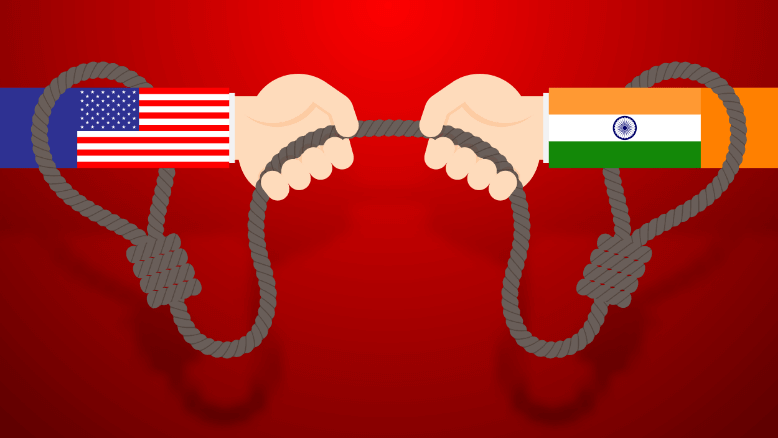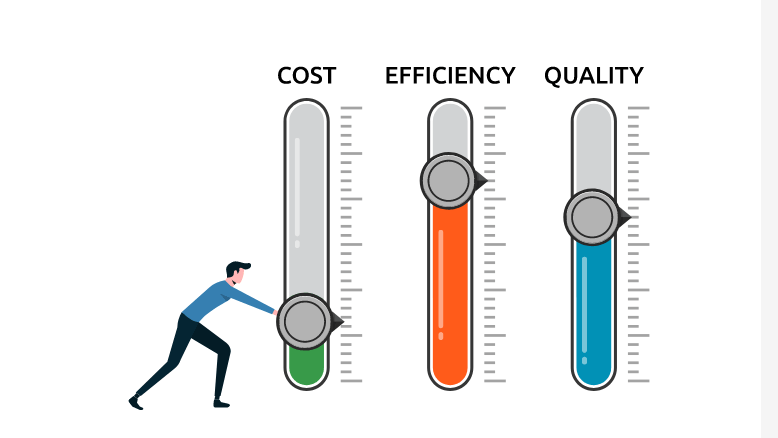Navigating the Unpredictable Seas of Supply Chain Volatility in 2023

Navigating the Unpredictable Seas of Supply Chain Volatility in 2023
As we sail through the uncharted waters of 2023, one thing remains certain: disruptions to supply chain operations are here to stay. Whether they stem from ongoing geopolitical conflicts, inflationary pressures, a recessionary environment, the ever-pressing issue of climate change-induced weather events, or unforeseen challenges that loom on the horizon, these disruptions have the power to reshape how goods flow across the globe. They can cause port holdups, shrink container and ocean freight availability, and send prices soaring, among other concerns. In the midst of this evolving landscape of supply chain volatility, it’s essential to recognize that 2023 has brought along a host of key supply chain trends that demand our attention. Successfully managing your organization’s response to these trends can be a pivotal opportunity in the coming year. As per a report by KPMG there are several trends that have emerged in 2023 and will stay on. First, nations are likely to approach cross-border trade cooperation with increased skepticism. Second, the activities of cybercriminals are expected to intensify, posing new threats to supply chain security. Third, access to critical materials may experience turbulence. Fourth, manufacturing footprints will undergo transformation. Fifth, retail and distribution supply chains will continue to evolve rapidly. Sixth, investments in supply chain technology will gain momentum. And finally, on the environmental, social, and governance (ESG) front, scrutiny of scope 3 emissions will intensify, driven not only by environmentally conscious consumers but also by investors and regulators. Before diving into trends lets understand the key challenges end use industries are facing due supply chain volatility and their impact.
Key Challenges
In the face of mounting geopolitical challenges and a surge in global trade protectionism measures, companies find themselves compelled to undergo a comprehensive supply chain overhaul. This transformation necessitates significant investments in establishing new production facilities and adopting cutting-edge technology solutions.
- High raw material costs and feedstock unavailability: High raw material costs are a result of the surge in energy prices and feedstock availability bottlenecks; these issues have affected the supply–demand balance across several end-use sectors
- Labour-related challenges: Several end-use sectors are seeing a massive skilled and semi-skilled labour shortage in the past 2 years, largely due to ripple effects caused by COVID-19 and ongoing geopolitical issues
- Logistics challenges: High ocean freight costs and surging ocean trade bottlenecks, amid the ongoing Russia–Ukraine war and China–Taiwan tensions, have led most companies to look for localisation of their supply chains
Impact on End use sectors
The winds of supply chain volatility continue to strongly impact key end-user industries worldwide. From high energy prices and economic slowdowns to inflationary pressures and supply chain disruptions, the ripple effects are palpable. These challenges underscore the need for adaptability, resilience, and strategic rethinking as businesses navigate a landscape defined by uncertainty and rapid change. Some of the key end-user industries affected by supply chain disruptions are
- Metals and Minerals
The metals and minerals sector has been particularly hard-hit by the confluence of factors contributing to supply chain volatility. High energy prices, economic slowdowns, inflation, and supply chain bottlenecks have cast a shadow over this industry. An illustrative example is the steel industry, where the share of energy costs skyrocketed from 7% to a staggering 27% in just one year. This dramatic increase has forced companies to make tough decisions. In September 2022, steel giant ArcelorMittal announced the indefinite shutdown of one of its blast furnaces at the Bremen plant due to soaring energy costs. This move underscores the severe challenges posed by supply chain disruptions in the metals and minerals production sector.
- Electronics
In the electronics industry, the story unfolds as one of demand imbalances. While automotive chips continue to experience robust demand, memory chips are grappling with subdued demand. This stark contrast has triggered significant fluctuations in the industry’s supply chain. An example is Sony Pictures Studios, which revealed in June 2022 that electric component shortages and manufacturing interruptions were taking a toll on its video game business. Such imbalances create a challenging environment for companies in the electronics sector, navigating the intricate web of supply and demand dynamics.
- Tech Industry
Even tech industry behemoths like Apple are not immune to the impact of supply chain volatility. In a bid to reduce its dependence on China, Apple is diversifying its tech supply chain. Political tensions and lockdowns in China have spurred this move, prompting Apple to set ambitious goals. The company aims to manufacture approximately 25% of its iPhones in India by 2025. Furthermore, Foxconn Technology Group, Apple’s primary assembler, has committed to a substantial $300 million expansion of its production facilities in Vietnam. These strategic shifts underline the profound influence of supply chain disruptions on even the most prominent players in the tech sector.
- Semiconductor
Supply chain volatility has penetrated deep into the heart of the semiconductor industry, impacting even the gases essential for chip production. Industrial gases, usually characterized by localized supply chains, have faced disruptions, especially rare gases like neon and helium. Neon, crucial in semiconductor manufacturing, has witnessed prices surging to ten times their previous levels. Semiconductor manufacturer SK Hynix, based in South Korea, is adapting to these challenges by sourcing domestically-produced neon gas for chip manufacturing. The company is on a path to increase the portion of neon gas processed within Korea to 100% by 2024, up from the current 40%. This strategic shift exemplifies the lengths to which industries must go to secure critical components amidst supply chain disruptions.
Key Supply chain trends of 2023
- Geopolitical Skepticism
As geopolitical tensions cast a shadow of uncertainty over global cooperation and trade, industries and governments are adopting proactive strategies to safeguard their supply chains. In this climate of caution, the need for comprehensive scenario modeling becomes paramount. Understanding the potential impacts of geopolitical tensions on supply chains is the first critical step.
To mitigate risks, organizations are exploring two key avenues: friendshoring and nearshoring. Friendshoring entails forging trade links with like-minded and geographically proximate nations, fostering greater supply chain security. These relationships not only enhance the reliability of material supply but also cultivate a sense of trust and interdependence among nations.
Moreover, it’s imperative for businesses to prepare for contingencies in case they can’t access essential materials or components due to geopolitical disruptions. This necessitates a clear understanding of the potential need for product reformulation, coupled with assessments of regulatory and customer approval implications. Additionally, there’s a need to evaluate the cost implications of sourcing from new suppliers or markets.
Incorporating friendshoring and nearshoring into supply chain strategies also demands an assessment of their impact on lead times and speed to market. By becoming more responsive and agile, organizations can potentially reduce working capital while fortifying their supply networks.
In 2023, as geopolitical tensions continue to loom large, businesses that adopt these proactive measures will not only enhance supply chain resilience but also position themselves as adaptable and forward-thinking leaders in an unpredictable world
As we step into 2023, the specter of cyber threats looms larger and more menacing than ever, especially when it comes to infiltrating supply chains. Cybercriminals, ever-evolving in sophistication, are poised to exploit vulnerabilities within supply networks, seeking to disrupt, damage, or pilfer from businesses. One particularly enticing entry point for these nefarious actors is the supplier network, offering a pathway to breach an organization’s systems.
- Cybersecurity
The scope of potential vulnerabilities is vast, from basic warehouse equipment like barcode readers to Internet of Things (IoT) devices embedded within manufacturing and operational sites. In this landscape of evolving risks, the decision to rethink supplier networks or invest in new technologies can potentially compound cyber risks.
To fortify against this looming threat, there are critical steps to undertake in 2023. First and foremost, recognizing that cybersecurity strategies often terminate at the borders of one’s own enterprise is essential. Collaboration with partners becomes paramount to collectively mitigate cyber risk throughout the supply chain. This involves identifying robust strategies and ensuring comprehensive risk governance across third-party contracts.
Moreover, meticulous cyber risk assessments must become standard for all new third parties entering the supply chain ecosystem. The adoption of artificial intelligence (AI) or machine learning (ML) during supplier onboarding can significantly enhance threat detection, particularly regarding spam and phishing emails. Recognizing the pivotal role of human error in cyber breaches, organizations must strategize the integration of technology and automation to minimize this vulnerability. A cyber assessment encompassing all functions and activities within the supply chain that employ IoT devices should be conducted, particularly those with direct access to sensitive information or providing gateways to broader system access.
In 2023, as cyber threats continue to evolve, proactive measures in cybersecurity will be pivotal in securing supply chains against unseen dangers and ensuring the resilience of business operations.
- Material Access Issues
In the coming year, a second wave of unforeseen supply chain risks is poised to sweep across industries. Limited access to critical manufacturing inputs, spare parts, and essential maintenance items looms large. Concurrently, key commodity prices and availability may experience unsettling fluctuations, affecting essentials like fuel, timber, steel, resin, and packaging materials. In this challenging landscape, the foundation of resilient supply chains will be paramount in addressing disruptions and adapting swiftly to evolving circumstances.
To protect against material access issues, businesses should proactively streamline operations by focusing on core offerings and eliminating the time spent managing low-demand items. Redundancies in the supply chain can be resolved by transitioning from a Just-In-Time to a Just-In-Case approach, bolstered by maintaining extra inventory for critical items and engaging multiple suppliers. The key lies in not merely professing the intent to seek alternative suppliers during disruptions but having well-defined plans in place, complete with cost and operational impact assessments.
Leveraging real-time data analytics and technologies like Blockchain for enhanced transparency, product traceability, and workflow automation will prove instrumental in mitigating risks. Furthermore, prioritizing end-to-end visibility and transparency across supply modes, transport nodes, and links will solidify supply chain resilience. As the unpredictability of the supply chain landscape persists, these proactive measures will be indispensable in navigating the complexities of 2023.
- Manufacturing Footprint
In 2023, the landscape of manufacturing and supply chains is undergoing a seismic shift. Rising energy costs and soaring input prices are compelling global corporations to reassess their manufacturing strategies. Friendshoring and nearshoring are being reconsidered, prompting deeper contemplation on whether manufacturing can be entirely onshore. While this transformation won’t happen overnight, the wheels are in motion.
Online retail is wielding greater influence over product manufacturing, as platforms seek differentiation through customization. This necessitates partnerships with manufacturers capable of meeting these unique demands. In the realm of life sciences, precision medicine is gaining regulatory acceptance, prompting a shift towards patient-specific production over mass manufacturing and global distribution.
This evolving manufacturing landscape raises a critical question: Should organizations establish new supply chains or redirect production to markets with existing capacity? The answers will shape the future of manufacturing and supply chain dynamics in 2023 and beyond.
- Retail & Distribution Supply chains
In 2023, while it might seem easier to deliver goods to consumers compared to the early days of the pandemic, the reality remains far from simple or cost-effective. An abundance of consumption mechanisms and channels has emerged, driving up costs. These challenges are not only tied to intricate manufacturing processes but are also exacerbated by increasingly demanding consumers. Last-mile delivery hurdles persist, compounded by supplier difficulties. To thrive in this environment, global and local retailers must reconsider their inventory distribution networks and cultivate a seamless unified commerce approach.
Effective strategies for navigating the complexities of retail and distribution in 2023 include rethinking the location of distribution and micro-fulfillment centers, elevating e-commerce and omni-channel operations into truly unified commerce processes, reassessing sourcing and supplier strategies to mitigate risks, and embracing predictive visibility through AI and ML-powered control towers. These steps are vital for staying ahead in the ever-evolving landscape of supply chain management.
- Focus on Scope 3 Emissions
In 2023, supply chain sustainability strategies are no longer optional; they’re the cornerstone of corporate ESG (Environmental, Social, and Governance) initiatives. Regulatory bodies, customers, and the financial community are increasingly demanding a focus on controlling scope 3 emissions. Greenwashing won’t cut it – stakeholders want informed, tangible actions.
Investors are also shifting their attention to organizations with low scope 3 emissions, driving a new era of sustainable finance. To truly operationalize your ESG strategy, every facet of your business, from Finance to HR, IT, Operations, and Commercial, must align their objectives. Internal collaboration is key, with each function accessing and tracking the same ESG data.
For a comprehensive approach, capture real-time operational data along your supply chain to measure and report on ESG matters. Build end-to-end supply chain visibility to understand the movement of your goods, the sustainability credentials of your partners, and actively make decisions to reduce your scope 3 emissions. In 2023, sustainability is not just a choice; it’s a strategic imperative.
To navigate these shifting currents successfully, it’s imperative to have three pillars in place: capability, agility, and end-to-end forward-looking visibility. A mature supply chain planning capability allows organizations to stay ahead of the curve, ready to address both risks and opportunities. Agility ensures your supply chain can adapt swiftly and effectively to unexpected challenges. Finally, establishing real-time visibility and collaboration across your supply chain ecosystem, driven by digital capabilities, is vital.
Road ahead
As we navigate the road ahead in the face of supply chain volatility, adaptability and resilience will remain paramount. Category managers must continue their vigilant monitoring of the ever-changing landscape and be prepared to adjust their strategies as needed. This may entail further strengthening relationships with critical suppliers, accelerating digitalization efforts for enhanced visibility and inventory management, and exploring diversified sourcing options for competitive pricing. Flexible contracts will continue to be a valuable tool in this dynamic environment, allowing businesses to pivot swiftly when necessary. Collaboration between category managers and suppliers will be pivotal, with the development of price mechanisms to mitigate the impact of price fluctuations.
In this uncertain journey ahead, the key will be agility and cooperation, as businesses strive to not only weather disruptions but also to emerge stronger and more resilient in the face of supply chain challenges.
Trade in Focus: The Future of US-India Trade: Trends and Projections

Trade in Focus: The Future of US-India Trade: Trends and Projections
In fiscal year 2023, India and the United States have marked a significant milestone by becoming each other’s largest trading partners, with bilateral trade surging by 7.65% to reach a staggering $128 billion. This remarkable achievement stands out amidst a global economic slowdown, underscoring the resilience and potential of US-India trade relations. As the world moves forward, opportunities for trade expansion between these two nations are set to soar. However, it’s crucial to address historical disagreements and seek ways to enhance trade dynamics. Let’s delve into the key categories of US imports from India and explore strategic initiatives for fostering stronger bilateral ties.
Key Categories of US Imports from India
The United States imported over $90 billion worth of goods from India in 2022, with several prominent categories leading the way:
- Pearls, Precious Stones, Metals, Coins ($16.15 billion): India’s expertise in the jewelry industry continues to shine on the global stage, with its exquisite craftsmanship and abundant resources in precious metals.
- Pharmaceutical Products ($9.08 billion): India has carved a niche in pharmaceuticals, boasting robust research and development capabilities and cost-effective manufacturing processes.
- Machinery, Nuclear Reactors, Boilers ($6.44 billion): India’s prowess in manufacturing machinery and related equipment is evident, making it a sought-after source for these imports.
Driving Forces Behind India’s Competitive Advantage
India’s strength and competitive edge in these sectors can be attributed to several factors:
- Labor-Intensive Manufacturing Exports: India’s abundant workforce translates into cost-effective labor-intensive manufacturing, providing quality goods at competitive prices.
- Information and Technology Services: A highly skilled technology workforce in India has solidified its position as a global hub for information and technology services.
- Pharmaceutical Excellence: India’s strong capabilities in research and development, coupled with efficient manufacturing processes, drive its success in pharmaceutical exports.
- Digital Competitiveness: India’s impressive contributions to technology innovation, particularly in telecommunications, information technology, and engineering, position it as a global technology powerhouse alongside the United States and China.
- Competitive Prices: India’s proximity, transportation flexibility, and significantly lower prices compared to other major exporters make it an attractive choice for imports worldwide.
Strategic Trade Enhancement Initiatives
While the US-India trade relationship has thrived, it’s essential to address potential challenges and ensure sustainable growth. Here are key strategies to consider:
- Reduce Trade Barriers: Both nations should collaborate on reducing trade barriers, including tariffs and non-tariff obstacles, through bilateral trade agreements and negotiations. This will facilitate smoother trade in the identified categories.
- Increase Investment: The United States can explore opportunities to invest in India’s labor-intensive manufacturing sector, leveraging India’s competitive advantage in this domain to bolster trade.
- Promote Technology Transfer: Encouraging technology transfer, particularly in the information and technology services sector, can further expand trade ties. Sharing technological expertise can lead to mutually beneficial outcomes.
In conclusion, the burgeoning US-India trade relationship is a testament to their resilience and shared commitment to economic growth. By focusing on these strategic initiatives, both nations can fortify their partnership, unlock new opportunities, and navigate any challenges that may arise in the ever-evolving landscape of international trade. As they continue to collaborate, the potential for trade expansion between these two economic giants remains boundless. With this understanding that cross-border commerce is set to boom, we at Zoglix – A Moglix Company offering and here to ensure smoother B2B transactions.
Spices and Surprises: Navigating US-India Agricultural Trade

Spices and Surprises: Navigating US-India Agricultural Trade
In the ever-evolving field of agricultural trade between India and the United States, this blog embarks on a comprehensive exploration. We are trying to carefully unravel the multifaceted challenges and promising opportunities that define this dynamic landscape. Additionally, we will shed light on the potential for mutual growth and the exchange of cutting-edge technology within the vibrant agricultural sector of these two nation.
The Agricultural Trade Landscape
The agricultural trade potential between the US and India is significant, given their pivotal roles in the global agricultural market. Recent advancements indicate a promising trajectory for agricultural trade, although challenges such as India’s stringent SPS (Sanitary and Phytosanitary) regulations persist, adding complexity to India-US trade dynamics. Nevertheless, a ray of hope shines through with India’s recent 70% tariff reduction on US pecan exports, a testament to the growing momentum in agricultural market access and bilateral agricultural trade. Notably, 2022 witnessed the opening of markets for Indian mangoes and US pork, symbolizing the evolving agricultural trade partnerships.
Addressing Challenges and Barriers
While the potential for US-India agricultural trade is evident, formidable barriers stand in the way:
- High Tariffs and Protectionist Policies: India’s unpredictable tariff policies and limited market access pose significant agricultural trade barriers.
- Price Sensitivity: US businesses must navigate India’s distinct price sensitivities to thrive in this market.
- Infrastructure Issues: Challenges like congested transport routes and inefficient port operations can impede the full realization of agribusiness trade potential.
- Power of States: India’s federal structure results in varied business conditions across its regions.
To harness the full potential of US-India agricultural trade, understanding and adeptly navigating these India-US trade challenges is paramount.
Identifying Opportunities
Fortunately, numerous opportunities abound for expanding agricultural trade:
- Condiments and Sauces: As Indian culinary preferences evolve, the US can seize the opportunity to expand its exports in this category.
- Cotton: Recognizing the quality of U.S. cotton, there is a burgeoning opportunity for American exporters.
- Wines, Spirits, and Craft Beer: Despite challenges, India’s growing penchant for foreign beverages can greatly benefit U.S. suppliers.
- Fresh Fruits and Processed Products: US fruits and processed goods can tap into the health-conscious segment of Indian consumers.
- Tree Nuts: With the health benefits of nuts gaining traction, the US has a promising market in India.
These opportunities, combined with a steadfast commitment to collaborative agricultural trade, offer a pathway for the US and India to surmount trade challenges, thereby strengthening their agricultural trade growth and technology transfer in agriculture.
The challenges in the US-India agricultural trade potential are undeniable. However, the prospects for mutual growth and agricultural technology exchange are vast. With the formulation of the right trade policy recommendations, both nations can reap the abundant benefits of this burgeoning relationship.
For comprehensive sourcing, procurement services, contract manufacturing, and trade financing solutions, Zoglix stands as a reliable partner. To delve deeper into how they can fortify your agricultural trade endeavors, learn more today. Zoglix has been helping business in the USA trade with ease in and with suppliers and business in India. Learn more
Charting the Course to $500B-$600B: India-US Trade Ties and Their Path Forward

Charting the Course to $500B-$600B: India-US Trade Ties and Their Path Forward
In the first half of 2023, India’s foreign trade soared past the USD 800 billion mark, defying global economic headwinds. A pivotal driver of this remarkable growth has been the burgeoning trade relationship between India and the United States. In FY23, these two nations solidified their status as each other’s leading trading partners, with bilateral trade surging by over 7.65% to reach a substantial $128 billion, up from $80 billion in 2020-21. Experts are optimistic about the trajectory, and they envision a future where India and the US set their sights on a bold trade target of $500 billion by 2030. In this blog, we explore the potential benefits of this partnership and identify sectors poised for significant growth.
The Power and Promise of this Trade Milestone
The India-US partnership rests on a foundation of mutual trust, respect, and collaboration. By working together, these nations can achieve shared objectives that span the global landscape:
- Global Security and Stability: Collaboration in addressing common challenges such as terrorism and climate change on platforms like the Quad can foster a rules-based international order and a free and open Indo-Pacific region.
- Economic Prosperity and Connectivity: Expanding trade, investment, and innovation opportunities in key sectors can boost economic prosperity. In 2020, Indian investments in the US exceeded $12 billion, supporting over 70,000 American jobs. Additionally, the nearly 200,000 Indian students in the US contribute nearly $8 billion annually to the US economy.
- Cultural Exchange: The United States is home to over 4 million Indian Americans, playing a vital role in strengthening bilateral relations and enriching American society through education, tourism, and diaspora engagement.
Uncovering Collaboration Opportunities in Key Sectors
India’s major exports to the US encompass a wide range of goods, including light crude oil, pharmaceutical products, gems and jewelry, electrical and electronics goods, and more. Here are key sectors ripe for growth and collaboration:
- Digital: The US and India can join forces to promote digital innovation, connectivity, and inclusion within both nations and throughout the Indo-Pacific region. Cooperation on cybersecurity, data privacy, artificial intelligence, and emerging technologies can address shared challenges and opportunities.
- Energy: Partnership in advancing clean energy development and deployment, enhancing energy security and access, and supporting climate action can yield significant benefits. Collaboration on research and innovation in natural gas and renewable/clean energy further strengthens the ties.
- Healthcare: The two nations can unite in the fight against the COVID-19 pandemic and other health challenges. Sharing best practices and expertise in strengthening health systems, achieving universal health coverage, embracing digital health, and advancing biomedical research can lead to substantial advancements.
By exploring and expanding growth avenues in these sectors, the India-US trade partnership can not only flourish but also achieve their shared goals while addressing their common challenges. To comprehend the profound impact of India-US trade ties on India’s sourcing costs, don’t hesitate to reach out to us. The future of global trade is in the making, and the journey to $500 billion-$600 billion is well underway.
Maximizing Profits in the Wholesale Clothing Business: Strategies for Success

Maximizing Profits in the Wholesale Clothing Business: Strategies for Success
Did You Know: The clothing market worldwide is predicted to grow a lot, reaching around $820 billion by 2023 and even bigger at $1.2 trillion by 2027. A big part of this comes from selling clothes wholesale.
Wholesale clothing business means buying clothes in bulk from manufacturers and selling them to retailers or your end-customers.
In today’s fast-evolving and fast-paced fashion world, capitalizing on the wholesale clothing business is an enticing choice any seasoned entrepreneur or even a beginner can make. The wholesale clothing industry offers humongous opportunities if planned wisely.
From taking care of your customers, providing excellent support services, evolving with the needs, and so much more, informed planning in the wholesale clothing business is the key to success in making your business a profitable deal.
In this comprehensive guide, we’ll discuss some of the strategies to help you navigate the wholesale clothing business landscape and pave your way to profitability.
Key Takeaways(H2)
- Understand gaps in the wholesale clothing market and provide solutions to attract more customers and make sales.
- Understanding your market and trends is very important to source the right clothing styles and make informed business decisions.
- Good business relationships with reliable suppliers means better deals, on-time delivery, and access to a quality product line.
- Quality is vital in the wholesale clothing business.
- Implement effective pricing and half the battle is won.
- Stay relevant!
Tips To Make Money Through Wholesale Clothing Business
For those willing to put in effort and hard work, along with some smart work, the tips below will help you take the lead in your business niche.
1. Identify Gaps In the Market
The reason why this tip tops the list is because this is how “Sugar Cosmetics” was successful in entering and reserving a strong spot in an already cluttered market. It started with identifying what was missing in the cosmetics industry and providing solutions for those loopholes. The result? It was successful!
Therefore, identify gaps in the wholesale clothing business and focus on providing solutions to those to attract more customers, ultimately leading to more sales and profit.
2. Thorough Market Research & Niche Identification
Now comes thorough market research, whose need can’t be undermined. When you understand your market, you source the right clothing, fashion, and trends, whether it’s formal wear, activewear, streetwear, or sustainable fashion. When you know what you are heading into, you end up acing it well.
3. Building Relationships with Suppliers
A successful wholesale clothing business depends heavily on strong supplier relationships. Find reliable and reputable suppliers who offer quality products at competitive prices. You can attend trade shows, industry events, and network with other professionals to connect with potential suppliers. A good relationship with suppliers could mean better deals, on-time delivery, and a good product line.
4. Quality is the Key
In the wholesale clothing business, quality is key. Your reputation and customer satisfaction are directly related to the quality of service you offer to your valuable customers. Find suppliers who prioritize quality and also provide samples before you place the final order. Maintaining quality leads to great marketing known as word-of-mouth, which is a plus for any given business.
5. A Good Pricing Strategy
Here comes the best maximizing profit, which is a good price policy. Determine your price accurately, including production, shipping, handling, and overhead expenses. Factor in a reasonable profit margin that is competitive within your chosen niche. Consider bulk discounts and incentives for larger orders to entice potential buyers.
6. Marketing & Branding
The next very vital step that’s directly linked to maximizing profits in the wholesale clothing business is a good marketing and branding strategy. Social media and a digital presence can turn the tables for any business in today’s digital landscape.
- For a wider use, use social media presence.
- For a reliable reputation, have a professional user-friendly website.
- For trust, have reviews listed wherever possible.
- For attracting customers, influencer marketing is the way.
And a lot more.
Make the most of whatever digital source you can!
7. Streamlined Inventory Management
Keeping a track of your stock is another crucial factor to prevent understocking or overstocking. If you have too many, you might not sell them all, and if you have too few, you might run out when people want to buy. You can use special tools to help you know what’s selling well and how much you need to have in stock. This way, you can make sure you always have enough to sell without having too much extra sitting around.
8. Diversification & Adaptation
As discussed earlier, the clothing market today changes with the blink of an eye. Here comes the need to be ready to diversify and adopt as and when required without bearing losses. Stay well-informed about what’s trending in the market to stay relevant. This flexibility will keep your business relevant and appealing to a broad spectrum of customers.
9. Profit Through Bulk Purchasing & Selling
Among so many ways to make money through the wholesale clothing business, the profit margin remains at the top. In wholesale purchasing, you buy clothes at a cheaper rate and sell them to your customers at a higher price. The profit margin in bulk purchasing and selling is the highest.
10. A Great Customer Service
Here’s the magic tip to keep your wholesale clothing business ahead of the competition- exceptional customer support. Address your customer’s issues, provide assurance when needed, and resolve other issues courteously.
Also Read: How to Find The Right Custom Clothing Manufacturer For Fashion Startups
Explore Zoglix: Your Ultimate Destination for Bulk Clothing
Are you in the search of a reliable clothing manufacturer to buy clothing in Bulk in India? Zoglix is the destination to rely upon. Here, you get an option to buy high-quality clothes in bulk from the manufacturer of your choice. The collection ranges from formal wear, trendy streetwear, fast fashion, to demand of your choice.
Here, we prioritize top-notch customer service, quality clothes, seamless ordering processes, and timely deliveries. It doesn’t matter if you are a veteran in this field or a beginner; Zoglix is always here to support you. Explore our diverse range of bulk clothing offerings today and take your business to new heights!
Final Words
In the world of wholesale clothing, smart strategies are the way to profit. By addressing market gaps, nurturing supplier bonds, focusing on quality, and executing good pricing and marketing, success is within reach. Unmatched customer service and adaptability make you stand out in the crowd.
Explore Zoglix for top-tier bulk clothing options, fueling your journey to wholesale success. Embrace these tactics, seize opportunities, and thrive in the wholesale fashion world.
India’s Digital Renaissance, a Catalyst for Bilateral Trade and Global Growth

India’s Digital Renaissance, a Catalyst for Bilateral Trade and Global Growth
In an increasingly tech-driven world, India has harnessed its prowess in information technology (IT) to revolutionize bilateral trade relations and elevate its global standing. The transformation is evident in the surge of cross-border trade, with India and the United States at the forefront of this digital renaissance. Let’s explore the key insights into India-U.S. trade dynamics and the remarkable impact of India’s digital evolution on global commerce.
Trade Surges in the Digital Era
Between 2020-21 and 2022-23, the trade figures between India and the U.S. witnessed an extraordinary leap, soaring from $80.51 billion to an impressive $128.55 billion. This staggering 59% growth owes much of its success to the profound influence of technology.
Why IT Matters
The IT sector has become a pivotal driver of bilateral trade. It streamlines operational costs, amplifies promotional strategies, and establishes extensive “India Sourcing Logistics” networks, making trade more efficient and cost-effective.
Beyond Boundaries
India’s IT and Information and Communication Technology (ICT) capabilities transcend traditional geographical constraints, paving the way for a global trade footprint.
Global Impact
According to UNCTAD, ICT services now constitute approximately 14% of global service exports, showcasing the substantial contribution of technology to international trade.
E-commerce Redefines the Trade Landscape
India’s e-commerce transformation, fueled by widespread smartphone adoption and lightning-fast internet, extends far beyond its borders, reshaping international trade dynamics.
Growth Trajectory
From a modest $500 million in 2016, India’s cross-border e-commerce skyrocketed to $2 billion by 2020. The projections for 2023 indicate the potential to reach a remarkable global milestone of US$ 1 trillion.
Digital Trade Prowess
The influence of e-commerce is undeniable, with the United States emerging as India’s top trade partner in FY23, underscoring the profound reach of digital commerce.
India’s Green Tech Odyssey
India’s commitment to green technology signifies a remarkable shift towards sustainable energy and a greener future.
Green Tech Innovation
India claims a 13% share of high-value green tech patents, particularly in water adaptation, quadrupling the global average.
Trade Titans
India’s strengths in smart grids and wind energy have propelled it to the forefront of the green tech revolution. Tamil Nadu’s, (a manufacturing state in India) wind power output even surpasses that of certain European nations.
Competitive Advantage
India’s attractive labor rates and robust domestic wind energy capabilities solidify its position as a formidable global contender in green technology.
A Future of Tech Advancement and Green Innovation
India’s digital journey points toward a promising future. As IT and e-commerce continue to flourish, India is poised to play a pivotal role in global digital trade. The focus on green technology signals a future where India leads the way in sustainable practices. In essence, expect India to further intertwine technological advancement with green innovation on the global stage.
To navigate these evolving landscapes and unlock the true potential of global trade, businesses need a partner with expertise and technological prowess. Zoglix – a Moglix Company has been helping organisations to push their digital transformation agenda in a rapid yet sustainable manner by empowering global supply chains through its cutting-edge B2B technology platform. Discover more with Zoglix now and lead the way in your global ambitions.
Revolutionizing Procurement: 12 Innovative Strategies to Cut Down Costs and Drive Success

Revolutionizing Procurement: 12 Innovative Strategies to Cut Down Costs and Drive Success
n the business world today, cost-cutting is not just a plan but a smart strategy to manage your core business resource—money! Many might confuse this strategy with spending less and not spending the right way. Well, the whole idea is to spend money in the right way to maximize profit. It’s a collective strategy with long-term benefits.
Now, procurement is no exception. The same money formula applies here. In this blog, we’ve rounded up 12 procurement cost savings ideas that will help you deliver value.
12 Best Procurement Cost Savings Ideas
Discover the top 12 strategies to cut costs and boost efficiency in your procurement processes. These ideas will help your organization save money and thrive.
1. Smart Buying
Another smart move to save money is to closely monitor how your organization buys things. Sometimes, it might happen that different parts of your company buy the same things. It directly leads to higher spending with no real gain. Therefore, get everyone on the same page and buy together. You might save time and money.
Tip: Don’t just always settle with a nearby supplier. Look for options and always compare for the better pricing.
All these actions will ultimately lead to reduced prices, giving your business a competitive advantage over your competition.
2. Build Strong Relationship With Supplier
A supplier-receiver relationship should not be limited to just buying and selling goods. A robust relationship between the two can lead to extended advantages like discounts that can ultimately lead to reduced costs and more profit. This can be achieved by doing repeat business, having transparent communication, agreeing to good terms mutually, etc.
With a strong relationship and trust, you may also get the advantage of paying later, which helps you use your money even more wisely.
3. E-Procurement and Automation
If not already, it’s just the right time to step up the modern game and switch to e-procurement platforms. These computer systems make it very convenient to request, approve, and process orders, making your work seamless.
Automation, on the other hand, is exactly like employing robots to do repeated jobs, so your team can focus on important tasks, saving you money in the long run.
4. Know What You Need
Having too much is as big an issue as having less than required in your inventory. At the same time, knowing your exact needs and quantity helps you cut costs and saves you from buying mindlessly and on storing extra things. So, use past sales data, current market trends, and things happening in the economy to figure out exactly how much of something you’ll need.
5. Be Sustainable and Save Money
One out-of-the-box tip for businesses that have a vision for the environment and society is to partner with suppliers who share the same vision. When you partner with people who are into sustainability, you will unveil humongous smart ways of doing things that will ultimately result in cutting costs for your business in procurement.
Plus, choose things that use less energy and are better for the environment, which not only cuts your costs but also helps the planet.
6. Watch A Track of Your Spending
Keep analyzing how much money you are spending and where. You can even use special tools that can help you see where your money is going, and you can compare your spending to what other similar companies are doing. Based on the analysis, you can see what are the potentials you can uncover!
7. Keep an Eye on How Well Suppliers Do
Always prioritize evaluating the company’s performance you buy goods from in terms of delivery timings, quality, and their response time. Have an open communication with your suppliers to check if all these metrics are met properly.
Having this area sorted, directly or indirectly, helps you save on costs that might incur due to inconvenience.
8. Team Up to Save Money
Collaborate timely with your organization’s other parts to become stronger when you plan on buying things. When working together, you have more power to ask for better deals, lower prices, and even benefits like discounts.
You can also share some of the costs, like the money spent on shipping or checking out suppliers, which makes it easier for everyone.
9. Get Suppliers to Compete
Have you heard about reverse auctions? Reverse auction is an online auction where buyers invite suppliers to bid on a project, contract, service, etc. Here, the prices go down, unlike the traditional auction method. This method helps buyers save money, a lot of it.
10. Good Inventory Management
Make the most of the power of technology that’s available at your disposal. Keep track of even the smallest details as to what your inventory has and what needs to be added there as per the requirements. This streamlined process ensures you don’t run out of products when your customers need them.
Technology ensures the right balance, leading to savings in costs by saving you from storing unnecessary items.
11. Mastering Supplier Contracts
This is one thing that many might underestimate. But remember, a clear contract has a lot to do with you saving on procurement. Write down how much things cost, what you expect them to do, and how you’ll solve problems if they come up.
Now, simply making contracts isn’t enough. Keep making amendments as and when required to keep saving as the market changes.
12. Stopping Sneaky Spending
Sometimes, people in a company might end up buying things without following the rules. This is called “maverick spending”. It happens when there’s no proper process for buying things.
This can be fixed by having a close look at all the spendings and stop sneaky purchases. Once you know, you can use technology to make sure everyone follows the rules and stops these unauthorized buys, saving you money.
Zoglix, a leading procurement solutions provider, aligns with the 12 cost-saving strategies outlined here. With Zoglix, organizations can streamline operations and drive success in a competitive business environment.
Also Read: Guide To Procurement & Sourcing From India: Best Practices
Final Words
In today’s business arena, cost-cutting is a must to make profits. Our blog here shares 12 innovative procurement cost-saving ideas, from smart buying, sustainable practices, competition, inventory management to more.
Zoglix, a leading procurement solutions provider, supports these strategies, helping organizations streamline operations and succeed in a competitive environment. Choose cost-effective procurement with Zoglix.
Websites Like Alibaba in India: Discover the Perfect Alibaba Alternative

Websites Like Alibaba in India: Discover the Perfect Alibaba Alternative
Alibaba is a known global online marketplace. It has revolutionized the way businesses connect, trade, and flourish. It’s now a leading platform, connecting buyers and sellers from various corners of the world. Trade has now become easier than ever. With its extensive range of products, very competitive prices, and user-friendly interface, Alibaba has gained so much popularity in the e-commerce landscape.
Alibaba’s success can be attributed to its secure payment systems, and efficient logistics network. By providing a platform that wins the geographical boundaries, Alibaba has empowered businesses to expand their reach and tap into global markets.
However, for businesses functioning specifically in India, there is a growing demand for a local alternative that caters to their unique needs and challenges.
The Need for an Alibaba Alternative
While Alibaba has time and again proven to be a powerhouse in the international market, many Indian businesses and entrepreneurs are looking for an alternative platform that meets their needs specifically.
Here comes Zoglix. It’s a remarkable online marketplace that offers an excellent alternative to Alibaba in India. Zoglix understands the intricacies of the Indian market, including language barriers, cultural nuances, and payment complexities, making it the ideal platform for Indian businesses to thrive.
With its localized approach and tailored services, Zoglix provides a seamless experience for buyers and sellers, fostering growth and opportunities.
Discovering Zoglix: Your Gateway to Indian Trade
Zoglix is a dynamic and robust platform that focuses on empowering Indian businesses and facilitating seamless trade. With its user-friendly interface and comprehensive product listings, Zoglix serves as a one-stop destination for entrepreneurs, retailers, and suppliers from different parts of the world. Whether you are a small-scale enterprise or a large corporation, Zoglix caters to businesses of all sizes, offering equal opportunities for growth and success.
The Advantages of Zoglix Over Alibaba
These advantages of Zoglix over Alibaba will make you make a wiser choice.
Extensive Range of Indian Products
Zoglix showcases a diverse range of Indian products, allowing buyers to explore and source products that are unique to India. From traditional handicrafts to contemporary fashion, Zoglix offers a wide array of options, ensuring a vibrant and authentic shopping experience.
Tailored Services for Indian Businesses
Unlike Alibaba, which primarily caters to a global audience, Zoglix understands the specific requirements and challenges faced by Indian businesses. It provides localized services, ensuring that sellers and buyers can navigate the platform effortlessly, while also benefiting from localized customer support.
Strengthening the Indian Economy
By promoting domestic trade, Zoglix contributes significantly to the growth and development of the Indian economy. It fosters entrepreneurship, encourages small and medium-sized enterprises (SMEs), and empowers local suppliers, thereby generating employment opportunities and enhancing economic stability.
Seamless Transactions and Trusted Partnerships
With secure payment gateways and robust verification processes, Zoglix ensures safe and reliable transactions. It emphasizes building long-term relationships between buyers and sellers, fostering trust and transparency throughout the trade process.
Join the Zoglix Community Today
Zoglix invites businesses, entrepreneurs, and individuals to join its thriving community. By registering on the platform, users gain access to a wealth of resources, including valuable market insights, educational materials, and networking opportunities. Together, we can shape the future of Indian trade.
Join the Zoglix Community today and tap into a global network of sourcing opportunities, connecting businesses and individuals worldwide. Expand your reach, access diverse suppliers, and navigate the global marketplace with confidence and efficiency.
Advanced Technology and Data-driven Solutions
Zoglix makes use of advanced technology and data-driven solutions to enhance the efficiency and effectiveness of trade operations. From smart search algorithms to personalized recommendations, Zoglix empowers users with cutting-edge tools. It enables you to make informed decisions and optimize sourcing strategies.
Strengthening the Future of Indian Trade
Zoglix is more than just an Alibaba alternative; it’s a symbol of progress, innovation, and inclusivity in the Indian e-commerce landscape. As businesses everywhere embrace digital transformation, Zoglix stands at the forefront, driving economic growth and fostering entrepreneurship.
By joining the Zoglix community, you become part of a vibrant ecosystem where opportunities abound. Connect with like-minded individuals, explore new markets, and unlock the true potential of trading and sourcing. Experience the power of Zoglix and embark on a journey of success and growth.
Conclusion
As Indian businesses seek reliable alternatives to global marketplaces, Zoglix emerges as a great choice. With its commitment to supporting local trade, extensive range of Indian products, and tailored services, Zoglix provides a platform that understands and caters to the unique requirements of the Indian market. Join Zoglix today and unlock a world of opportunities for your business breaking the boundaries.
Remember, Zoglix is more than just an Alibaba alternative; it’s a gateway to India’s thriving trade ecosystem, offering a seamless experience for buyers and sellers alike. Discover the power of Zoglix and unleash the potential of Indian trade.
Top 5 Fashion Accessories Women Like To Carry The Most in 2023

Top 5 Fashion Accessories Women Like To Carry The Most in 2023
As we are approaching the years of fast and unbothered fashion, especially for women, the trends have been the most bizarre yet the coolest you can come across. Women are embracing almost everything, even the most uncommon and unthought-of items, in the most unique way possible. These trend-setters are killing it.
From runways to wherever your sight catches women carrying it like a lady boss, this inseparable relationship between ladies and fashion accessories is a talked-about topic of the generation, especially in 2023.
Not only from the fashionista’s point of view, these trends are even giving retailers ideas for what items to stock.
Well, if you want to follow the fashion trends, here are a few fashion accessory suggestions that are here to stay.
5 Women Fashion Accessories You Must Bookmark for 2023
These accessories are known to be expressive and a definition of one’s personality and aura, which they carry with pride and confidence.
Chokers
If you are more of a choker fan, your luck in fashion will continue in 2023 and beyond. A popular accessory in the year 2000, the modern-day choker still shows no sign of slowing down. It’s definitely a must-have to your collection but with a twist.
Sitting high on the neck and embellished with rhinestones, diamante, and decorative gemstones, these are now available in various styles and shapes. From tiger claws encircling from the back to front, to semi-circular and ‘incomplete’ rings, there’s something to suit every taste.
Wait, if you are a minimalist fan, rejoice because thin-strapped monotone chokers in silver or rose gold, often adorned with a single pendant in the middle, look super classy with almost any type of attire.
Handbags
Here come the handbags, and ladies couldn’t agree more to it. Right ladies? Well, for all those saving money to buy handbags to style up their fashion statement, here’s a little something for reconsideration.
Handbags, in 2023, have risen to the level of being one of the must-haves accessories for ladies. Apart from being a must-have to carry your essentials, these bags exude sophistication and charm, making them highly coveted items.
The good news? The modern-day collection of bags comprises a diversified range, including multiple styles, shapes, and sizes, each serving different purposes. From classic totes and crossbody bags for everyday use to elegant clutches and evening bags for special occasions, there’s a handbag for every lifestyle requirement.
Timeless Watches
“Time flies,” but the time for watches’ fashion to fly is not going to come anytime soon. The amount of class and statement that watches add to your attire is unmatched, reflecting the wearer’s unique style. A simple outfit with a watch is just the perfect “go-to” for those lazy days that demand you to be stylish.
In the world of fashion accessories, watches hold a special place, embodying both functionality and a timeless sense of style, making them a favorite among women in 2023.
Shapely Sunglasses
In 2023, nothing could beat the statement that shapely sunglasses are capable of. Women are boldly acing shapely sunglasses with a bang. These not only protect the eye but also elevate the entire outfit just like that.
From oversized cat-eye frames to sleek aviators and geometric shapes, sunglasses come in a variety of styles to suit every taste and preference.
The trend is all about being bold with the right hint of glamor. Also, simplicity has its own boldness.
Shapely sunglasses have become a must-have for fashion-forward women, adding a touch of confidence and allure to their overall look in the scorching summer sun.
Belts
Here comes the best, saved for last. To change the complete outlook of your attire, a belt would do the job just right. The perfect final touch! Welcome to 2023, where you find your options sorted and ready, just like you would love it.
From wide statement belts to delicate waist-cinchers, the variety of styles allows for endless outfit possibilities. In 2023, belts have the responsibility of accentuating the waist, which is commendable and creates a flattering silhouette.
From wide leather belts, braided leather belts, chain link belts, multilayer belts, printed belts, and whatnot, you can get your hands on what suits your personality the best.
Zoglix: Your Go-To Fashion Accessories Supplier
For retailers and fashion enthusiasts trying to hop on the trends in 2023, Zoglix is your right partner to import bulk fashion accessories. With a wide collection of high-quality products, Zoglix offers a plethora of fashion accessories for women to cater to every customer’s unique preferences.
The all-inclusive selection ensures that you can stock up on the latest fashion accessories, making it easy to meet the ever-changing demands of your clientele. With Zoglix, you can elevate your fashion game and stay at the forefront of the fast-paced and ever-evolving fashion industry.
To Conclude
In 2023, women are embracing a diverse range of fashion accessories, including chokers, handbags, timeless watches, shapely sunglasses, and belts. Zoglix is the go-to supplier for retailers, offering a wide selection of high-quality accessories to cater to every customer’s unique preferences. Stay at the forefront of fashion trends with Zoglix and provide women with the trendsetting accessories they wish.
Also Read: https://blog.zoglix.com/exploring-the-cost-benefits-of-sourcing-from-india/
How to Start Online Shoe Business in 2023- A Basic Yet Important Guide For Success

How to Start Online Shoe Business in 2023- A Basic Yet Important Guide For Success
Over the next seven years, the global footwear market is expected to grow at a rate of 3.62% annually. This significant annual growth makes the business idea of selling shoes a very lucrative option. But, is only an idea enough to start selling shoes online?
Many people become enthusiastic about starting their own business, but even the most passionate and hardworking minds fail at tackling a certain set of challenges when it is their turn to actually deal with selling and facing competition.
Well, all you need is the right guidance and the basics to get started with your venture. Rest, you learn and grow. So, here’s a guide on how to start your online shoe business in 2023.
Essential Requirements for an Online Shoe Business
Before you start with your online shoe venture, make sure your checklist of all the essentials is ready to create a strong brand identity.
1. A Compelling Name
People often make the mistake of keeping an obscure name in the name of being creative and out-of-the-box. The core idea is to settle on a name that strikes the right chord and is memorable. Today, there are so many business name generator tools available to help you with the name and brainstorming.
2. Business License
Just like the offline shoe business, running an online shoe store doesn’t exclude you from having certain legal requirements. The license you must have depends on your business requirements. In fact, some cities and states can have different requirements that you will have to keep up with.
Licenses necessary for an online shoe business are:
- Business Operation License: Permits conducting business in the city, county, or state where the eCommerce operates.
- Employer Identification Number (EIN): Identifies the business as a distinct tax entity.
- Seller’s Permit (or Seller’s License): Legally allows the sale of shoes online.
3. Brand Logo
The right brand logo can do wonders for your business. A well-crafted logo puts out the right message to your target customers. Don’t make it complicated; rather, be more simple and creative. It should communicate the very essence of your business in just one glance.
4. The Price
The price is the key to winning over your customers and leading the market. Is keeping a lower price the right thing to do? No! Is keeping the price higher the right thing to do? Absolutely not! Then what? It’s the right balance that would work. Choose the right price strategy for your business based on a number of factors like revenue goals, competition prices, business cost, etc.
Customer Expectations for Online Shoe Business
In order for your online shoe business to be a success in 2023 and beyond, where digital competition is terrifyingly massive, here’s what you need to be stronger at the very core of your business:
1. A User-Friendly Online Store
You must be aware that around 88% of the users never come back when they have a bad experience at a website. A huge number right? Well, there’s also a saying that “The Internet doesn’t give a second chance.”
Therefore, a website that’s not user-friendly is never going to make it to your potential customers.
The key is to make your customers find whatever they are looking for without any clutter or hassles. This can be achieved when your focus points are providing customers with segregated product categories, filters, clear pricing, and an easy payment gateway.
2. High-Resolution Pictures & Videos
Gone are the days when a single image of the product with a bulleted description would work. Today, customers wish to have an online feel for the products through pictures and videos. Shoppers want a comprehensive product image from multiple angles.
Your online shoe store requires high-resolution photos and videos that provide customers with an immersive experience, allowing them to feel the product rather than just zooming in on pictures. Ensure quick loading times for a seamless browsing experience.
3. Mobile-Friendly Experience
Every day, 45% of people worldwide use their phones to shop online, indicating that more than two in five individuals engage in mobile shopping. Therefore, a mobile-friendly user-experience can’t be emphasized enough
4. Return Policy
A return policy is the best way to create trust with your customers. So, make sure your online shoe store has a clear return policy.
The Expert Advice!
If you are trying to enter the online shoe selling market with the entire niche in mind, you might put your success at risk.
No doubt everyone today needs shoes. But targeting “everyone” is not as easy as finding the right fit and the right size. Especially as a newcomer in the ecommerce market selling something where competition is huge, the move is risky. Rather, deal in a niche product that targets a particular audience.
So, instead of “I want to sell men’s shoes,” try “I want to sell leather shoes, knee-high boots, sports shoes, etc.” Focus on a particular niche, and the chances of entering and making a mark in the market will be easier.
Effective Marketing Strategies for Your Online Shoe Store
You need to connect with your audience in order to let them know about your products and offerings. Therefore, curating a proper marketing plan can’t be underestimated in the digital era.
Content: Through engaging content, you let your audience know what’s trending and how your solutions can give a new angle to their footwear style statement.
Social Media: Keep your social media game strong. Connect and engage with your customers to form a personal bond. It also builds the trust factor.
Streaming Platforms: Utilize streaming to update your audience on exciting news and product releases.
SEO: Perform the right SEO so you reach your target audience at the right time by ranking higher on SERP.
Paid Advertising: Drive targeted traffic to your online shoe store through paid ads.
Sourcing Shoes from India with Zoglix
When starting your online shoe venture in any corner of the world, it’s crucial that you source high-quality shoes at competitive prices to get an edge over your counterparts. Zoglix is an online platform where you get access to a wide range of shoes from India. As a leading player in the market, Zoglix ensures that you find the right shoes to align with your niche and fulfill your clientele’s demands.
India is known for its rich tradition of shoemaking and offers a diverse collection of footwear, from classic leather shoes to trendy safety shoes and more. By partnering with Zoglix, you can tap into this vast market and offer your customers unique and stylish shoe options.
To Conclude
Starting an online shoe business in 2023 requires a compelling name, legal licenses, and a user-friendly website. High-resolution pictures, a customer-friendly return policy, and sourcing quality shoes from India with Zoglix are essential for success in the competitive marketplace. Focus on a niche product to stand out and thrive in the evolving online business landscape.
Also Read: https://blog.zoglix.com/exploring-the-cost-benefits-of-sourcing-from-india/